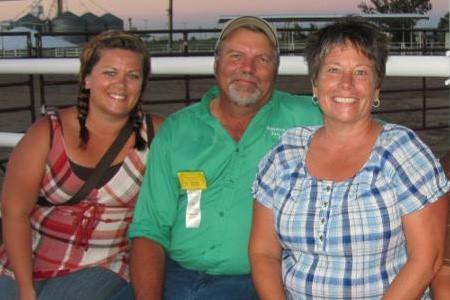
3 minute read
Explanation of Evaluation Scores
The Traits We Evaluate… …and Score
Fro m th e v er y b e gi nnin g, Ph ar o Cat tle Company has been evaluating and scoring bulls for a variety of traits — traits that most seedstock producers have never even considered. Suffice it to say, we are Different fo r all th e Right Reasons. Each bull is individually sorted off and evaluated by four to six people in a 12-foot sorting alley. A rating of “5” is best, with a “3” being average. Below are the traits we evaluate and score — as well as what we are looking for. Scores for some of these traits can only be found by using our unique Quick Sort program (see page 10). • Fleshing Ability… The amount of condition (fat) that a bull carries under his hide. While some bulls are able to get fat on limited feed resources, others do good just to hold their own. For the most part, we use the ultrasound measurement for back fat thickness to score this trait. • Thickness… This is basically a measurement of depth and width. It has little to do with muscling. What we are looking for is the most pounds for every inch of height. High-volume animals with a lot of heart girth are the type required for low-input, grass-based programs. • Muscling… Since we’re in the beef business, we need animals with substantial muscling. The best place to look for natural muscling is in the twist area (between the rear legs). Light-muscled animals are narrow and cut up high in the twist. In contrast, heavy-muscled animals are deep and wide in the twist.
Advertisement
• Masculinity… A bull should look like a bull — and the sooner he does, the better. For the most part, we are looking for the presence or absence of secondary sexual characteristics. The neck and the head are the best places to look. We like a bull with a thick, wide neck that has a very pronounced crest on top. Bulls also need to have a “bull” head — not a “cow” head. • Overall Rating… This is overall visual appearance or eye appeal. While some bulls are extremely attractive, others are very plain in appearance. The most attractive bulls will usually have high scores for most of the other traits we evaluate and score — but not always. • Hair Coat… Healthy, well-adapted bulls will have a lively looking hair coat year-round. During the winter months, the hair should have a soft “teddy bear” look and feel to it. In the summer, the hair coat should be short, slick and shiny — shiny enough to almost see your reflection. The presence of dull, dead hair will lower the hair coat score. • Fly Resistance… This is not as difficult to evaluate and score as some think. We simply assess how many flies each bull has. There is often a big difference between bulls within the same herd. While a few bulls are black with flies, others will have very few flies. In the cool morning hours, flies will be on the animal’s back. As the day warms up, the flies will move to the shaded areas of the belly and legs. • Disposition… Disposition is the last thing we evaluate and score. It is important for a bull to be separated from his herd mates for an extended period of time before we can accurately evaluate his disposition. As you are evaluating the bull for other traits, his disposition (good or bad) will begin to express itself. We like to crowd the bull from both sides to test his flight zone. Bulls that remain very calm receive a high disposition score — while those that show signs of fear, nervousness and/or aggression will receive a low score.









